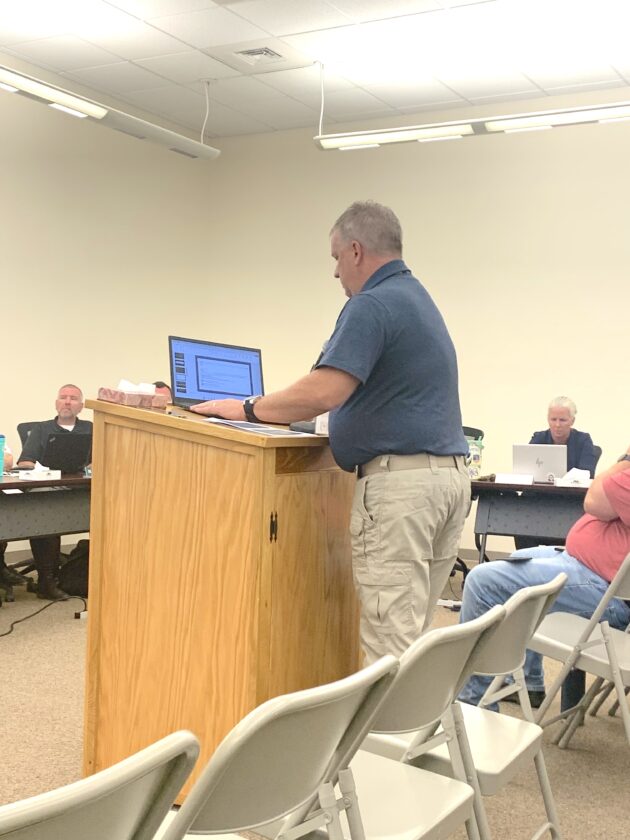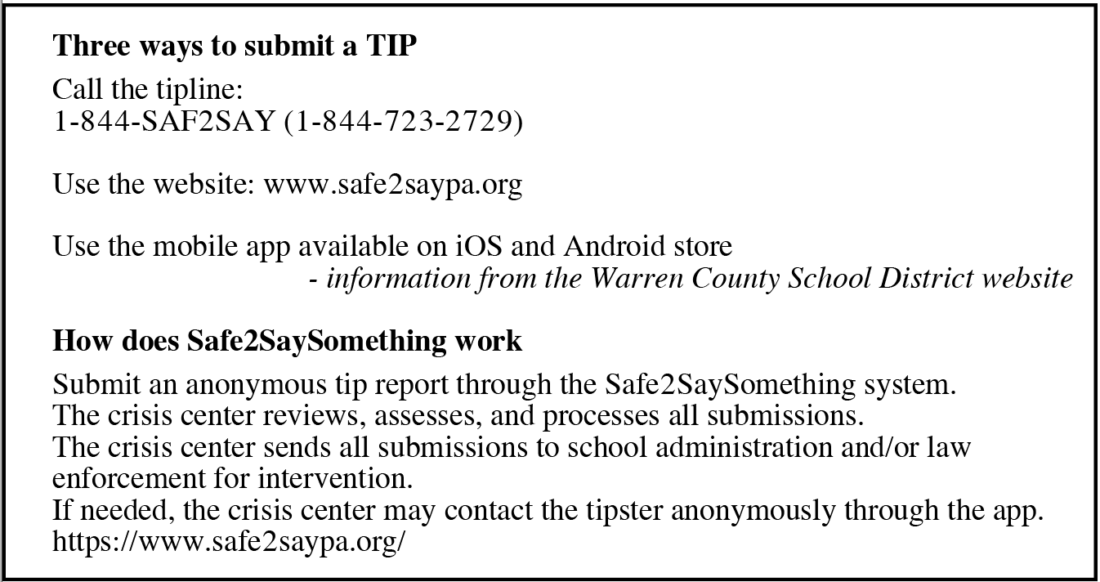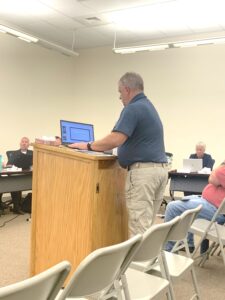School board hears threat assessment presentation

Times Observer photo by Jessica N. Rex Brandon Deppen, Warren County School District school safety officer, gives a presentation during school board committee meetings earlier this week.
- Times Observer photo by Jessica N. Rex Brandon Deppen, Warren County School District school safety officer, gives a presentation during school board committee meetings earlier this week.
Brandon Deppen, district school safety officer, made a presentation during committee meetings this week and discussed the threat assessment process that is used by the district. Gary Weber, district superintendent, reiterated that the district works closely with law enforcement through the assessment process and that ensuring student safety is the district’s top priority. There are four levels of threats, according to Deppen, including:
– Transient: an individual does not appear to post a threat to self or others and can be resolved easily. Most threats fall into the transient category, Deppen said.
– Moderate: a serious threat but not immediate with intervention possible. An assault or fight would be an example of a moderate threat.
– High risk: involves serious violence towards others. At this point the district’s team takes action. High-risk threats include a threat to kill or use a lethal weapon. High-risk threats require law enforcement action.

– Imminent: means it will happen right now; the individual(s) have the means and the ability to carry a threat out; immediate calls are made to 911 and police.
Deppen showed the statistics on how many of all four of the assessments that were done most are level one or two.
In 2024-25, there was a total of 146 of which 127 transient. In 2021, when the program was started there were 35 calls. In 2022-23 there were 42 calls. That number increased to 109 calls in 2023-24 and 146 in 2024-25, with 130 from Safe2SaySomething system tips.
The threat assessment team starts their investigation right away. Typically an (always anonymous) tipster will provide very little information. For example, even though the safe2say responder asked a few questions, there was no more information given by the tipster. So with very little information, the team now has to investigate which, based on receiving little information, takes quite a while. Most tips come late at night.
Weber also commented how much social media blows up potential threats, starting rumors that pile up.
“Every scenario is different,” said Paul Mangione, board member, who said each threat is different so the reaction to the situation is different. Once law enforcement is called, it is then their decision on how to move forward with the situation.
The presentation can be viewed: https://www.wcsdpa.org/o/wcsd/page/threat-assessment-program




